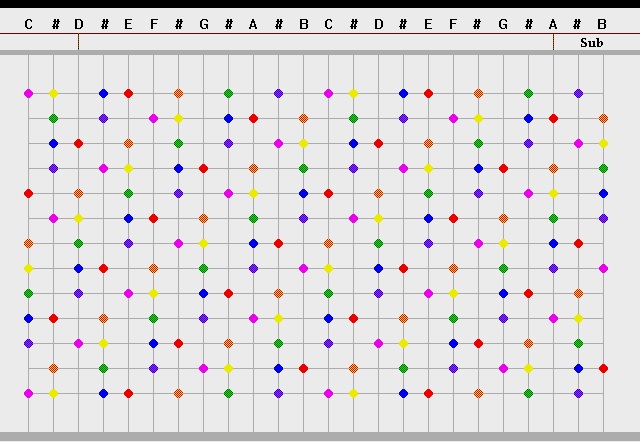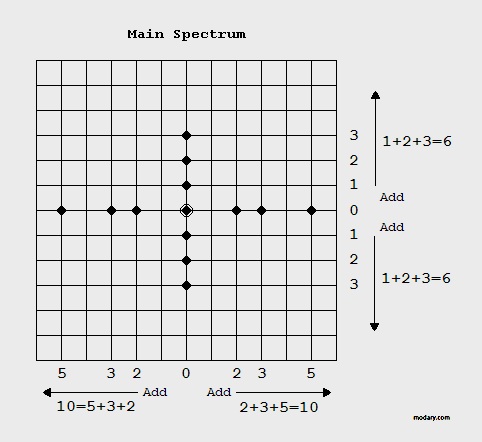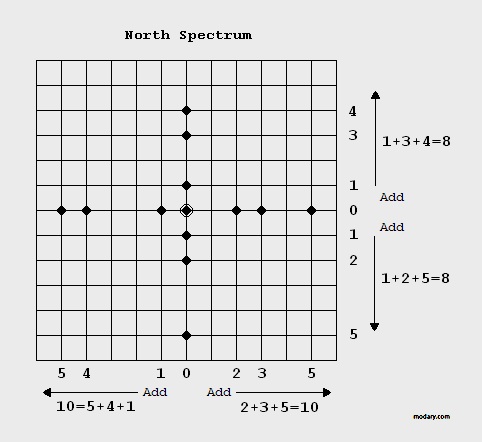

|
Later it would be determined that the Melodic Minor Scale is situated as the
Yellow Mode of The Sub Spectrum, and the Harmonic Minor Scale as the
center of The North Spectrum. |

Figure 1.7 (Above) Sub Spectrum ; Figure 1.8 (Below) North Spectrum

|
Upon recognition of the multitude of spectrums, it became necessary for the research to determine a precise quantity of potential spectrums and modes. Using a simple computer programming language, we were able to request that a computer find all of the possible scales that match a small set of regiments regarding modal-scales; more specifically, since each mode of any spectrum naturally has six others that live with it as relatives, we were looking for the modes that had the quality of being in the center of their spectrum; these incidentally coincide with a principle of fulcrum mechanics. |

Figure 1.9 : Fulcrum Balance
|
On application of the principle, the relative-notes surrounding a note are treated as if they are each an equally weighted object, and they are all placed apart from each other at the same type of distance that they encounter as they exist in the chromatic dimension. In physical science, it is known that the increase in downward-force of the weight is equal to the distance from the center point or fulcrum. In the search for new spectrums, however, we may be surprised to realize that when such a balance occurs in the chromatic dimension is always seconded by the same point being balanced in the perpendicularly drawn 'Reflective Dimension' that is founded by the Perfect 5th of the Circle of 5ths. This is evident in both spectrums analyzed below. |

Figure 1.10 : Balance [Main] |

Figure 1.11 : Balance [North] |
|
Eventually there could be made a set of regiments with which to qualify modes as useful to the theory of operation of the system: A mode has to be a member of a spectrum, which by definition contains a center-mode that is balanced in both the chromatic dimension and the reflective dimension; a mode should not have more than three notes in a row; and a mode should have no count of adjacent unoccupied spaces greater than two. Only after testing the functionality of the modes with the Sytem's Map could any certainty be had that the correct regiments were being used to achieve the correct set of modes for a Modary. The extensive research of Tonentity Publishing™ ultimately determined there to be 17 spectrums, with 7 modes each, equaling 119 modes. |
| Next |

